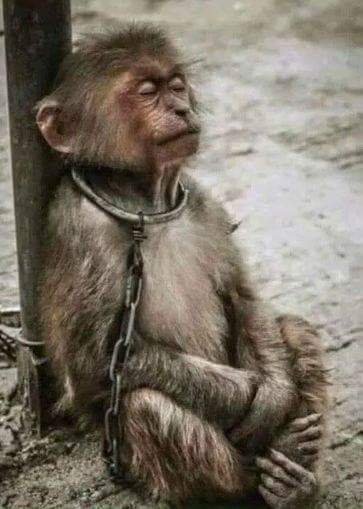 Cruelty to animals, also called animal abuse, animal neglect or animal cruelty, is the infliction by omission (animal neglect) or by commission by humans of suffering or harm upon any non-human animal, regardless of whether the act is against the law.
Cruelty to animals, also called animal abuse, animal neglect or animal cruelty, is the infliction by omission (animal neglect) or by commission by humans of suffering or harm upon any non-human animal, regardless of whether the act is against the law.
Animal cruelty can take many different forms. It includes overt and intentional acts of violence towards animals, but it also includes animal neglect or the failure to provide for the welfare of an animal under one’s control. In addition to this, it is important to remember animal cruelty is not restricted to cases involving physical harm. Causing animals psychological harm in the form of distress, torment or terror may also constitute animal cruelty.
As a result of there being so many possible forms of animal cruelty, state and territory animal welfare legislation does not attempt to define it in an exclusive way; rather, animal cruelty is described generally as any act or ommission that causes unnecessary or unreasonable harm to an animal. Most animal welfare Acts will provide particular examples of cruelty. These may include:
torturing or beating an animal;
confining or transporting an animal in a way that is inappropriate for its welfare;
killing an animal in an inhumane manner;
failing to provide appropriate or adequate food or water for an animal;
failing to provide appropriate treatment for disease or injury; and
failing to provide appropriate living conditions.
State and territory animal welfare legislation prohibits all forms of animal cruelty and imposes obligations on all animal owners to provide for the welfare needs of their animals. Breaching animal welfare legislation is a crime . Serious cases can result in large fines and imprisonment. Animal cruelty generally falls into two categories: neglect, or intentional cruelty. Neglect is the failure to provide adequate water, food, shelter, or necessary care. Examples of neglect include: starvation; dehydration; inadequate shelter; parasite infestations; failure to seek veterinary care when an animal is in need of medical attention; allowing a collar to grow into an animal's skin; confinement without adequate light, ventilation, space or in unsanitary conditions; and failure to trim hoofs or nails resulting in excessive growth (e.g. hoofs curling upwards). In some cases neglect is a result of the owner's ignorance, and can be rectified by law enforcement authorities, like the Ontario SPCA, educating the owner and issuing orders to improve the animal's living conditions.
Animal cruelty generally falls into two categories: neglect, or intentional cruelty. Neglect is the failure to provide adequate water, food, shelter, or necessary care. Examples of neglect include: starvation; dehydration; inadequate shelter; parasite infestations; failure to seek veterinary care when an animal is in need of medical attention; allowing a collar to grow into an animal's skin; confinement without adequate light, ventilation, space or in unsanitary conditions; and failure to trim hoofs or nails resulting in excessive growth (e.g. hoofs curling upwards). In some cases neglect is a result of the owner's ignorance, and can be rectified by law enforcement authorities, like the Ontario SPCA, educating the owner and issuing orders to improve the animal's living conditions. How to recognize animal cruelty:
How to recognize animal cruelty:
Look for these common signs of neglect or intentional cruelty witnessed by Ontario SPCA investigators:
Wounds on the body.
Severely overgrown nails (often curling under) or hooves (often curling upwards).
Patches of missing hair.
Extremely thin, starving animals with ribs or backbone protruding.
Infected eyes that have been left untreated.
Limping.
Animals who are repeatedly left alone without food and water. Often they are chained up in a yard.
Animals who have been hit by cars and have not received veterinary attention.
Animals who are kept outside without shelter in extreme weather conditions. Tropical birds especially cannot tolerate cold temperatures.
An owner kicking, hitting or physically abusing an animal.
Report all cases of animal cruelty to the appropriate authorities in your country, save these animals before its too late.
Hi! I am a robot. I just upvoted you! I found similar content that readers might be interested in:
http://ontariospca.ca/what-we-do/investigations/what-is-animal-cruelty.html
Stop Copy And Paste Bro..........Just Try And Be Creative and Original
I carried out a research and thought it was okay to get few points from certain sources.Thanks anyways.